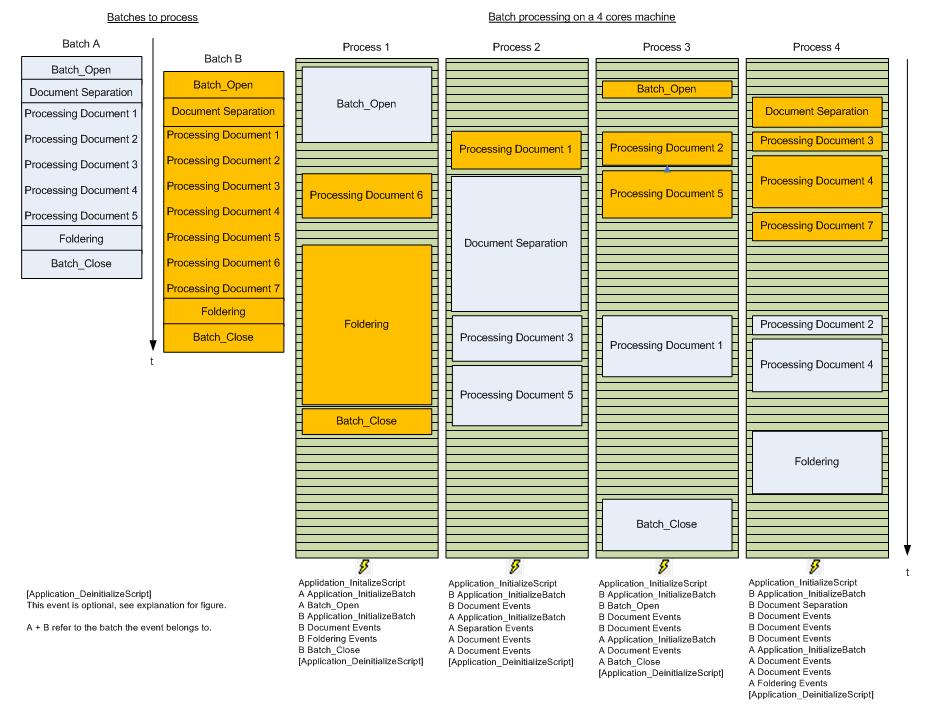Parallelization
Parallelization is performed automatically by the Server Scheduler when the following circumstances are met:
-
It must be that either:
-
The batch to process contains more than one document.
-
The document of the batch contains more than one page where the recognition (OCR) has to be done.
-
More than one batch for the same project is ready for processing.
-
-
Additionally, if there are cores not currently in use and the current project has no batches ready for processing, but there are batches ready for processing from another project, the Server Scheduler is able to start processing the second project while ending the processing of the original batch in parallel. To be able to perform this action, the Server Scheduler must be configured in: Kofax Transformation - Service Configuration - Server SchedulerService - Automatic start of batch processing .
-
The computer used contains at least two cores and the Server Scheduler is configured to use more than one core.
-
Enough memory is available, and the Server Scheduler has not reached the usage-limit set in the configuration.
The parallelization can be performed at three different task levels:
-
The page level, if there is at least more than one page selected for the recognition in the document.
-
The document level, if there is at least more than one document to process in the batch.
-
The batch level, if there is at least more than one batch to process for the same project or if some cores are currently free and some batches are ready for process for a second project. In this case some cores are finishing to process the batches of the first project and others are starting to process the batches of the second project.
For more information about parallelization, see the Configuration Guide - Processing With Server - Multiprocessor Support and Parallel Processing.
The following figure, shows the fired events and their order/timing in a scenario where two batches related to the same project are processed in parallel on a machine with four cores. In this scenario, we assume that batch A is ready to be processed by the Server just before the batch B.
